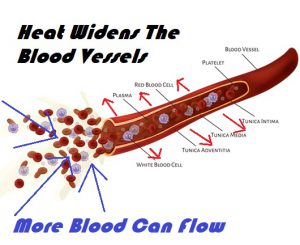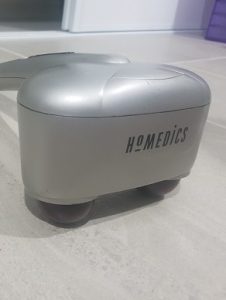What To Take For Sore Muscles To Obtain Fast Relief

I hope you love the products I've recommended below, just a heads up that as an Amazon associate, I earn from qualifying purchases. This means I may earn commissions on products bought via links on this page.
Sore muscles can be quite a frustrating problem that makes every kind of person wonder what to take for sore muscles. Whether you have aches and pains from an injury or illness, or you’re sore because you’ve been exercising hard, it can quickly become frustrating if the soreness interferes with your day to day life. So what to do for sore muscles?. There are numerous methods, potions and pills you can take. However, avoiding medication is the ideal route to take.
Exercise is very important for health and well being. But as we all know, it is far too easy to feel un-motivated. Especially if the the exercise results in you being sore for days afterwards. It’s important to understand that working through the soreness is a big part of getting fitter. Don’t let yourself end up sidelined because you’re ‘too sore to train’. Usually, just ‘getting moving’ again is all it takes to get fitter, but if you’re finding that you’re so sore that you can’t move, then maybe a change in your nutrition and supplementation routine is in order.
Quick Links To Info On This Page
How The Body Recognizes Sore Muscles
Sore muscles can also be a result of day to day activities. Such as a sore neck or lower back pain. Treating these muscles works in the same way as treating sore muscles after exercise.Whether you have a knot, pulled muscle, pinched nerve or joint pain, the basic principal is this.
Nerves transmit to your brain ‘pain’ from any of these symptoms. When the muscle is sore, or torn the blood flow to the area suffers. The associated nerves recognize that ‘hey, your muscle isn’t receiving as much blood as it should’. So it sends these pain signals to your brain to notify you of the problem.
The lack of blood means that you are not receiving the oxygen, glucose and nutrients to the affected area. All of which help to self heal naturally. So the simple answer to this is give the restricted area more blood. But how do we do this?
Self Healing Your Muscles At Home
The best medication free way to treat sore muscles form your own home is by using heat therapy. Applying heat therapy to your sore muscles can be done in a few ways. But first, how does heat relieve muscle pain?.
What heat therapy does is this. The heat penetrates deep into the muscles and joints (provided you have a good heat source). This then causes the blood vessel walls to expand in diameter. This then allows more blood cells to rush through the blood vessels to the area in which you are heating.
This is of course the summarized version. If you want to know more about how heat relieves pain you need to read the 3 top ways heat helps sore muscles. In this article you can find a more in depth explanation and also 3 ways you can apply heat to your sore muscles for almost instant relief.
If heat isn’t your friend, then here are a few ideas to help you treat sore muscles from home.
What To Do For Sore Muscles Using Devices
Foam Roll Your Muscle Pain Away
What to do for sore muscles from home using devices you can buy such as a foam roller. Using a foam roller for muscle pain is a great medication free way to relieve sore muscles. Foam rollers are relatively new in the fitness world and pain relief industry. But they are certainly growing in popularity and are most definitely here to stay.
Foam rollers come in many different types, shapes and styles to target certain body parts. Oh, they also come in a variety of colors. Which is important. This is because the black foam rollers are typically more dense and hard. This is for seasoned foam rolling gurus. First timers should avoid black foam rollers or you may just make your sore muscle bruised and even sorer.
If you have never used a foam roller before, I highly recommend the beginners range. These are softer yet still firm enough to roll out your sore muscles. Which is perfect for the day to day sore muscles we all incur. However, if you are into exercise and do it regularly, eventually you will want to upgrade to a more firmer and dense foam roller. But for now, I wouldn’t recommend it.
If the idea of using a foam roller on your sore muscles interests you and you want to know more. I suggest checking out the health benefits of foam rolling. It may surprise you just how great these inexpensive tools are. There are all sorts of rollers available to target big muscles down to small targeted muscles.
Self Massage Your Muscle Pain
Massage is a time tested and very reliable way to help sore muscles. It’s been in practice for what seems an eternity and has proven itself to be one of the best ways to relieve sore muscles. But visiting a professional massage therapist can be quite expensive. Especially if you get sore muscles often.
The solution to this is of course handheld massagers. Having the ability to give yourself a massage is seriously priceless. No matter how much the massager costs, if will always work out cheaper in the long run. If you have never owned a massager before, I highly encourage you too. The amount of use I get out of my many massagers is ridiculous. They have well and truly earned the once off investments.
Massagers come in various sizes with different types of massages and settings. So choosing one will come down to what muscles on your body are sore.
For example, me and my partner both suffer from lower and mid back pain. So much so that standing in one spot for more than a couple minutes becomes too much. Our preferred massaging device for our backs are the portable heated and shiatsu chair pads that you can put on top of pretty much any chair. These chair pads give the best deep tissue massage while we are able to sit down and not do any of the work. Incredible invention and one that I wish I had discovered many years ago.
Pain Medication For Sore Muscles
If you have an acute bout of soreness – perhaps you competed the previous day, or you know you over-did it and you need to perform at work, then you can take something like acetaminophen (also known as Tylenon) or an NSAID such as naproxen or ibuprofen to get you moving again. Try not to do this regularly, though – long-term NSAID use can hinder recovery and could increase your risk of stomach ulcers and other health problems.
You would be better off improving your nutrition. Vitamin C is an antioxidant that can help with soreness – and it should be found in most multivitamins. Protein supplements can help to improve recovery time and build muscle, and creatine is good for exercise recovery as well.
Hydration is vital. If you get dehydrated in a workout then that could leave you at risk of falling ill, or just suffering from very bad cramps.
Exercise Supplements
There are many supplements on the market today, all of which promise to help with recovery, strength, muscle mass and more. Fish oils can help with joints, BCAAs are often sold as a recovery aid, and there are pre-workouts that promise to increase exercise performance as well.
If you tried to buy everything that will ‘improve your athletic performance’ then you would probably end up going broke. There are shelves and shelves of recovery aids and workout enhancers – and whether or not they really work is questionable. Before you spend money on an over the counter prohormone that promises to stop muscle soreness, check whether you really need to. For the most part, you will find that you will be better off with water, lean meat and vegetables, and a sensible workout regimen.
Preventing Sore Muscles
Try not to exercise after drinking alcohol. Try to eat sensibly and make sure that you are well hydrated before you exercise or perform day to day activities. You will be less likely to get cramps and sore muscles in the first place if you warm up properly. Be sure that you are well hydrated before you start your training session, stay hydrated, and ‘cool down’ instead of going from maximum effort to stopping in a sudden fashion.
If you are trying to get stronger/faster or otherwise push yourself, then make sure you do it sensibly. Progressive overload where you push yourself in small increments will still leave you sore, but it will not leave you feeling the same level of intense and prolonged soreness as you would if you tried to do a massive one rep max unexpectedly, when your CNS wasn’t anywhere near adapted to that level of exercise. Train smart, and you will be able to train more often, and for longer, than if you pushed yourself too hard, too soon. There’s no need for expensive remedies.
